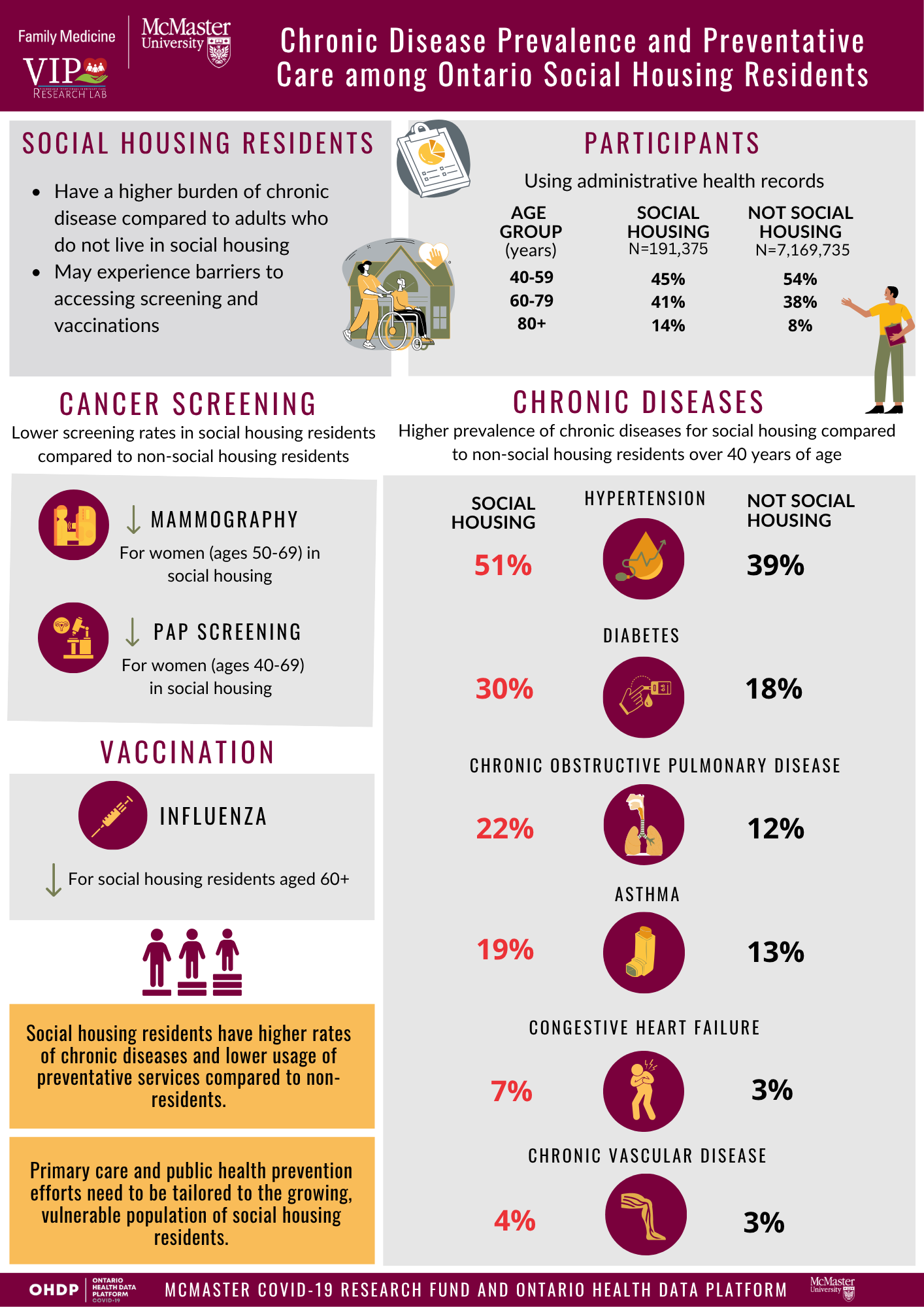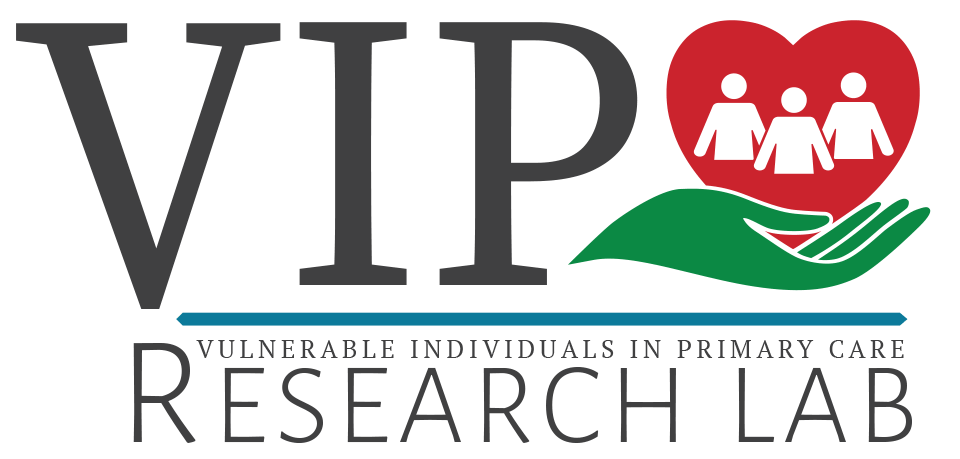
The infographic titled “Chronic Disease Prevalence and Preventative Care Among Ontario Social Housing Residents” provides a comprehensive overview of the prevalence of chronic diseases and the utilization of preventive care services among social housing residents in Ontario. Besides the title, the infographic is branded with the logos of the VIP Research Lab and the McMaster University Department of Family Medicine.
The infographic begins by highlighting the higher prevalence of chronic diseases among social housing residents and how this may be influenced by barriers to accessing screening and vaccinations. This study included 191,375 individuals 40 years and older living in social housing and 7,169,735 individuals who are not.
The left side of the infographic has cancer screening and vaccination rate statistics. Lower mammography screening rates in women aged 50 to 69 and lower PAP screening rates in women aged 40-69 were observed in social housing residents compared to non-social housing residents. There were also lower influenza vaccinations for social housing residents aged 60 and over.
On the right side of the infographic, statistics on chronic diseases are presented. Overall, there was a higher prevalence of chronic diseases in social housing compared to non-social housing residents over 40 years of age. 51% of social housing residents and 39% of non-social housing residents had hypertension. 30% and 18% of social and non-social housing residents respectively, had diabetes. 22% of social housing residents and 12% of non-social housing residents had chronic obstructive pulmonary disease. Asthma was prevalent in 19% of social housing residents compared to 13% of non-social housing residents. Congestive heart failure was prevalent in 7% and 3% of social and non-social housing residents, respectively. Lastly, 4% of social housing residents and 3% of non-social housing residents had chronic vascular disease.
There are also two summary statements on the bottom left side. The first states that social housing residents have higher rates of chronic diseases and lower usage of preventative services compared to non-residents. Secondly, primary care and public health prevention efforts need to be tailored to the growing, vulnerable population of social housing residents.
There is a banner at the bottom of the infographic which states the following: “McMaster COVID-19 Research Fund and Ontario Health Data Platform”. There is a logo for the Ontario Health Data Platform COVID-19 (OHDP) on the left of the text and a McMaster University logo to the right of the text.
